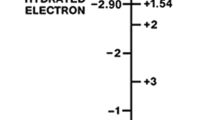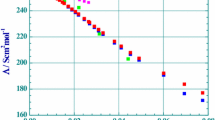Abstract
IT is generally held that instantaneous chemical reaction, if not all chemical action, is dependent upon ions; in other words, that such reactions take place between electrolytes. In order to test this point, the author has attempted precipitation by double decomposition (like the reaction between silver nitrate and hydrochloric acid) in solutions that are excellent insulators. As a solvent benzene was chosen, though it seems that petroleum ether or toluene would have been equally good. The benzene used was the best that is made by Kahlbaum, free from thio-phen. It was allowed to stand for days over phosphorus pentoxide, from which it was distilled, and was finally kept standing over metallic sodium. The conductivity was tested by comparison with that of air. For this purpose an Arrhenius resistance cell, with plates less than a millimetre apart, was placed in series with a sensitive galvanometer, and a dynamo giving a pressure of 110 volts. When the cell contained air a slight movement of the needle could be seen on closing the circuit, and on replacing the air by benzene the deflection was somewhat less. The insulating properties were therefore good.
Similar content being viewed by others
References
Abstract of a paper in the Journal of Physical Chemistry, vol. vi. pp. 1–14, 1902, by L. Kahlenberg.
Rights and permissions
About this article
Cite this article
C., W. Instantaneous Chemical Reactions and the Theory of Electrolytic Dissociation . Nature 67, 41–42 (1902). https://doi.org/10.1038/067041a0
Issue Date:
DOI: https://doi.org/10.1038/067041a0
- Springer Nature Limited





